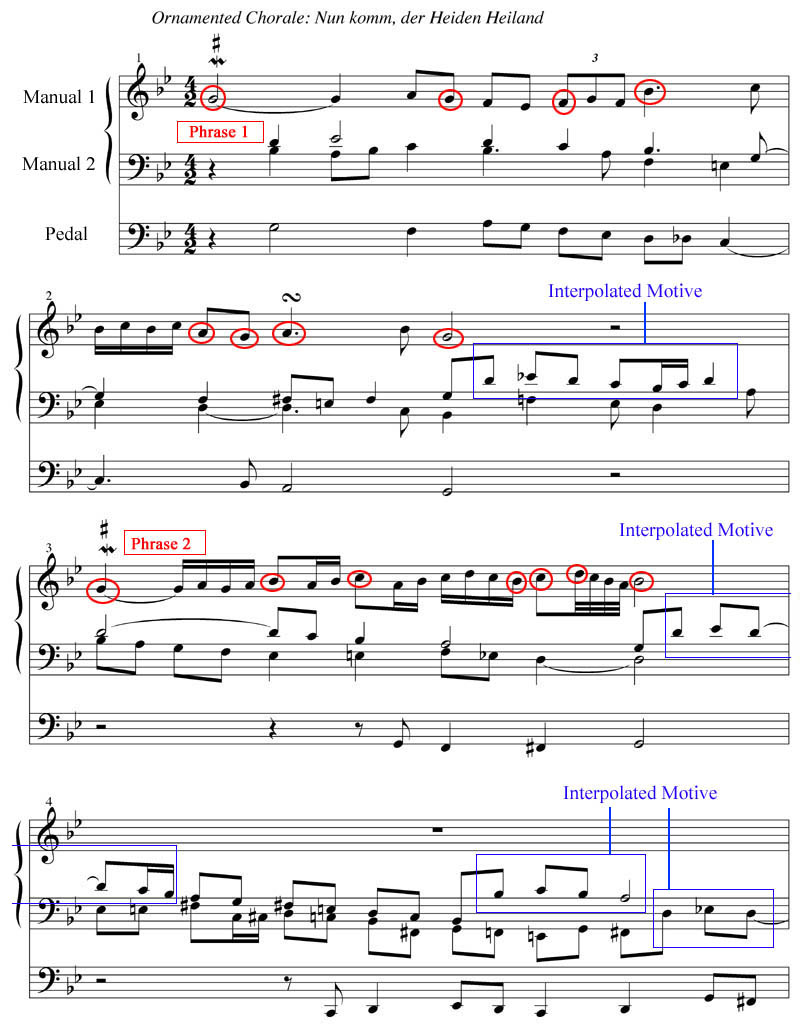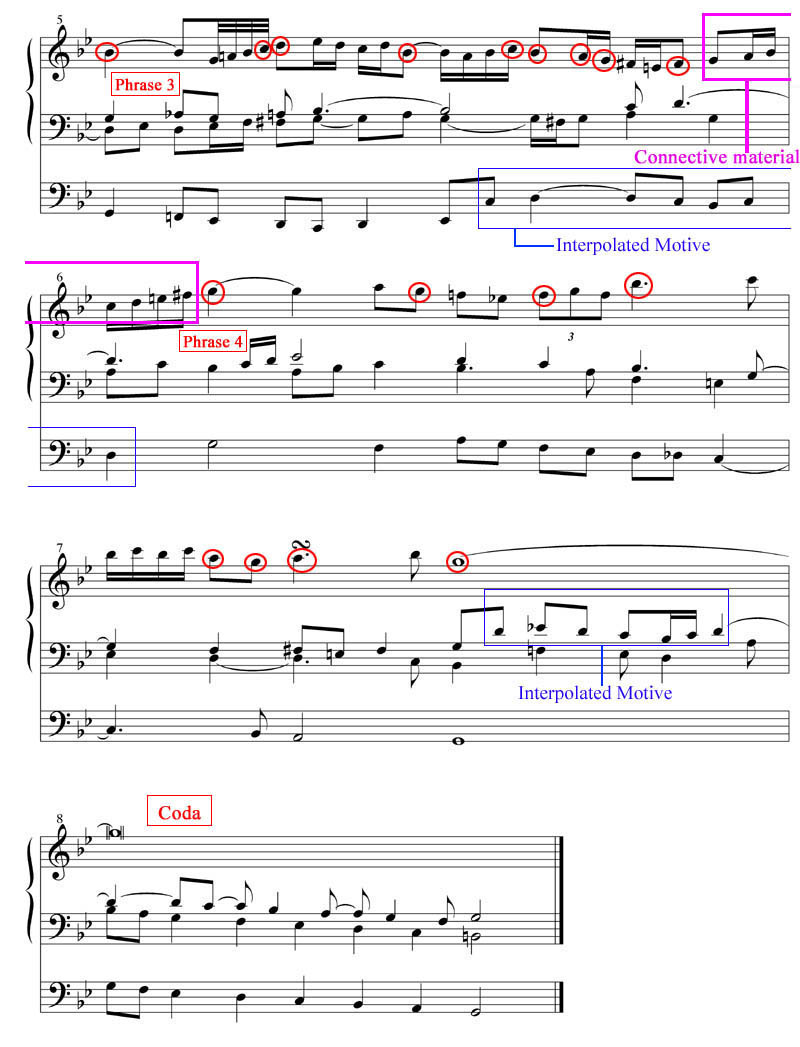AUDIO and MIDI files can be listened to on this page or downloaded separately here.
D. Ornamented Chorale
The ornamented chorale focuses first on crafting an elaborate and decorated version of the normally stately cantus. This finely detailed line can then be supported by an accompaniment comprised of material that is significantly less convoluted and restless. This form, which provides for enormous creative license, maintained a popularity throughout the Baroque. However, one can point to Franz Tunder (1614-67) as the North German composer to bring to the genre an expansiveness and creative depth that was unequalled during the era.
In our original composition below, we've chosen to expand the meter for the sake of clarity, especially at a slow tempo. The pitches from the original chorale melody are circled in red. Note the spacing between the notes is irregular and the contour of the solo is stretched both below and above its original ambitus (or range). The spacing between the phrases is irregular - only one beat is silent between the first and second phrases while an entire bar is wedged between the second and third. This approach is taken to avoid too monotonous a texture: gaps of varying lengths between phrases are created to allow the supporting voices to take some time to prepare for the next entrance with new material.
We have decided to build into the framework of the piece an interpolated motive (meaning a subsidiary and very brief melodic idea) that is occasionally introduced to bring greater unity to the somewhat meandering accompaniment.
The first and fourth phrases as set here are nearly identical, but to bring greater drama to the work, we have lifted the final cantus line an octave higher. To accomplish this change in register seamlessly, we have employed a rising scalar passage at the end of the third phrase in bar 5 to act as a segue. This ascent is balanced at the coda through a descending chain of suspensions in the accompaniment.
mp3 download (two manuals and pedal organ version)




